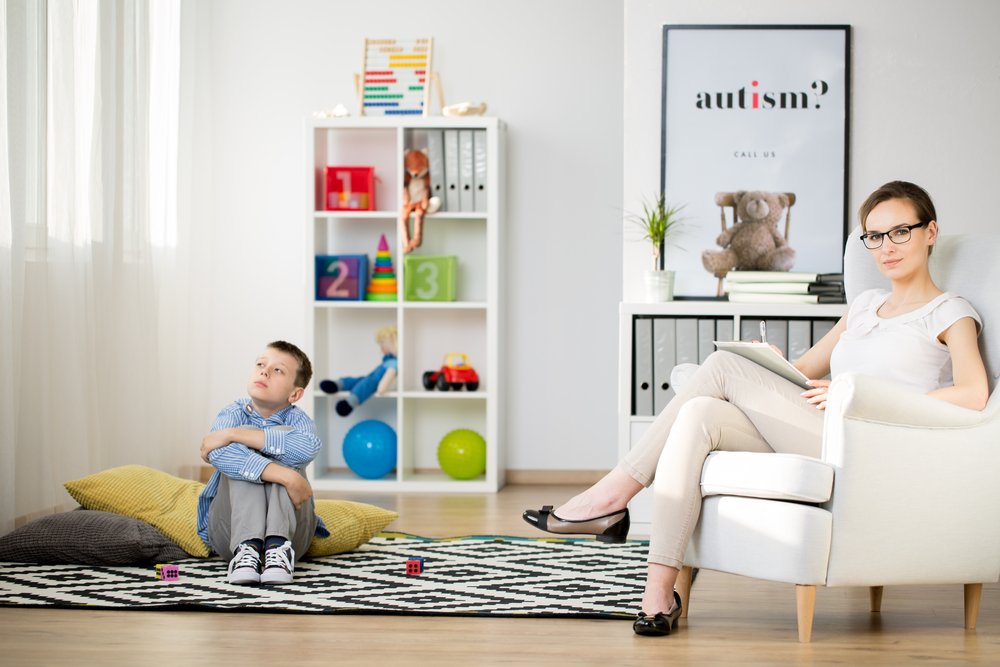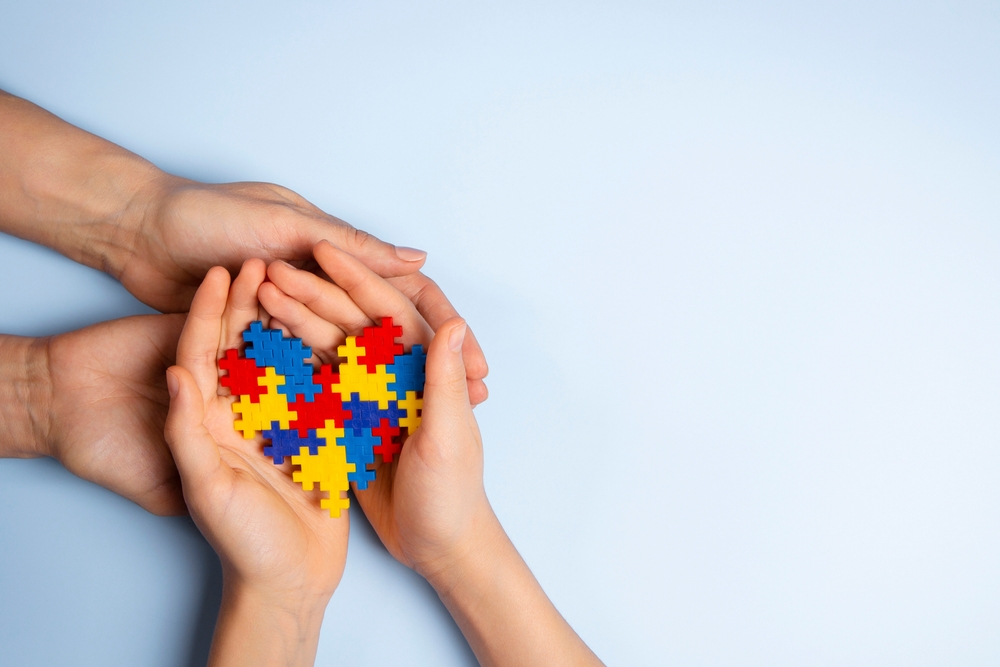Understanding echolalia in autism can help you better understand and communicate with your child or friends, but what is it, and what does it mean?
Autism affects millions of people worldwide, and one common element that you will find within this disorder is echolalia. However, what exactly is this, and how is understanding echolalia in autism useful?
Many people won’t have heard the term ‘echolalia’ before, but you will likely be familiar with it nonetheless. Whether you experience echolalia, or someone you know does, understanding what it is, and its connection to autism will be helpful.
If you would like to learn more, please don’t hesitate to contact us and find out more about our programs, assessments, results, and success stories. If you want to find out more about ASD, why not have a look at our blogs on how to parent a child with ADHD and autism, or the difference between Asperger and autism?
Autism Overview and Characteristics

Autism is a disorder that can impact different people in different ways. Common challenges that autistic people face revolve around social skills, repetitive speech and behaviours, non-verbal communication and more.
As with all disorders, every autistic person’s experience is unique. In some cases, the characteristics linked to the disorder are more prevalent, while in others, they are more hidden. This can impact day-to-day life, where some individuals require more assistance throughout their lives, while others get by on their own without additional aid.
Like ADHD, there are many successful people with Autism – including Anthony Hopkins, Susan Boyle, Greta Thunberg, and so many more. These people are capable of living normal lives, but the lens through which they see life, and their experiences, are different from how neurotypical people see it.
It is important to know that while autism can be incredibly varied, there are a number of common comorbidities to consider. Things like sleep disorders, gastrointestinal disorders, anxiety, and depression are all common in autistic populations. This can add additional challenges to their lives.
What Are the Signs of Autism?
Autism can look different in boys vs girls due to girls being better at masking their behaviour. This has meant that ASD has been under-diagnosed in the female population, though this disorder is more prevalent in boys, at a three-to-one ratio.
There are numerous signs of autism to be aware of, and they can all be present in varying degrees in any individual. Where some autistic individuals will have extreme anxiety, others will have little to no anxiety, and the same goes for the importance of routines, or the strength of reactions to unpleasant stimuli.
Primary signs of autism in adults:
- Enjoying having a routine and becoming anxious when that routine changes
- Taking things literally (this is especially common with phrases and sarcasm)
- Difficulty stating how you feel
- Coming off as uninterested, rude, or blunt regarding what others are saying
- Anxiety due to social situations
- Difficulty understanding what other people might be feeling or thinking
- Preferring to be on your own or finding it challenging to make friends
Additional signs of autism may include:
- Disliking or getting upset when other people get too close to you or touch you
- Having selected, very keen interests in particular activities or subjects
- Frequently noticing details that others don’t, such as patterns, sounds, or smells
- Planning events or activities thoroughly before you do them
- Having a strong dislike for particular sounds, smells, textures, or tastes
- Often getting too close to people
- Difficulty holding eye contact
- Trouble understanding common social or societal rules
What is Echolalia?
In simple terms, echolalia is characterised as the exact echoing or repetition of words, sentences, or sounds. Around 75% of individuals diagnosed with ASD experience echolalia, but this is also common in people with ADHD.
It is incredibly common in toddlers and young children to repeat words, sounds, and phrases when they are learning a language. However, echolalia in autistic people will continue into adulthood.
Understanding Echolalia in Autism

Understanding echolalia in autism is key, as it can help set your child up for success. Because this is so common, it’s worth parents, teachers and family members knowing about it so that adults and other children can be more mindful of the words and phrases they use.
There are two kinds of echolalia – immediate and delayed. As the names suggest, immediate echolalia refers to when words and phrases are repeated immediately upon hearing them, while delayed echolalia happens some time after hearing them.
There is also an internal form of echolalia called ‘echologia’ – this is where the words, phrases, and sounds are involuntarily repeated inside your head. For example, when you have a particular section of a song stuck on repeat in your head.
Why Do Autistic People Use Echolalia?
As we mentioned, echolalia is common in young children who are learning to talk, but can also occur in up to 75% of autistic populations. As children grow and learn, echolalia can be used in three different ways, according to professionals.
These are the three primary reasons for echolalia:
- Prefabrication – using scripts and repeated phrases can be useful in autistic people when they are too stressed or nervous to come up with their own original words/phrases
- Stimming – self-stimulation, or stimming, are behaviours that autistic people exhibit as a means of self-soothing. Echolalia can be used as a means to help calm themselves down when they are in an unpleasant situation, or are overwhelmed
- Self-talk – words and phrases through echolalia can help an autistic person process or talk themselves through a variety of things. This is why it’s important to be mindful of the words we say, particularly when children are young
Echolalia Helps People Communicate
According to researchers, echolalia can be a useful tool to help people communicate. Within communication, the repeating of sounds, words, or phrases can help with a child or person’s ability to:
- Ask for something – an example of this could be, “Do you want milk?” as a way to ask for milk due to seeing how others offer milk
- Answering yes or no – a child might try to start a game of tag by saying. “You’re it!” because they have seen people say it during the game
- Drawing your attention to something – a child might say, “You don’t want to wear these shoes?” as a response to their parents getting a pair of shoes, which really means that they don’t want to wear those shoes
- Keep an interaction going or start a new one – a child might say, “Do you want a hug?” in response to being asked if they want a hug, which means they do want a hug
It can be challenging to decipher the true meaning behind words and phrases that stem from echolalia. However, remember to take the context into account and take notes of what you notice to help you on the journey to better understanding the person.
Modelling Language When You Have an Echolalic Child

Because words and phrases can be involuntarily repeated, it’s crucial to be mindful of what we say, particularly around young children. Not only that, but when modelling language around an echolalic child, we should use words that are useful and can help them.
Below are some ways to model language for someone who has echolalia:
- Try to keep things simple at a young age
- Repeat useful phrases to help them communicate “e.g. “I want___”
- Comment on what your child is doing while doing them to help them learn (e.g. washing your face, drying your hair, etc)
- Minimise the use of pronouns initially, and instead use their name (e.g. use ‘Max’ instead of ‘she’)
- If your child doesn’t yet answer questions, avoid using questions
Visit the Brain Workshop

Here at the Brain Workshop, we are dedicated to helping you live your best life. If you want to learn more about autism, ADHD, and mental health, have a look at our latest articles on if ASD is a learning disability, the importance of nutrition and brain development, the causes of a short attention span, and how to improve your concentration.
Understanding echolalia in autism can be challenging, but with some effort, you can get the hang of it. It’s important to remember that echolalia manifests in a person with autism repeating things that they have heard, whether this is from friends, family, or media. So, being aware of what they are watching at a young age may be more important than ever.






